*Affiliate Link Disclosure – Any purchase submitted through any of the links found in this article will earn us a small commission on qualifying purchases; at no extra cost to you.* See Detailed Affiliate Statement for more information.
I am NOT a veterinarian or vet tech; I’ve just been through a lot of stasis episodes. Decades of working in human healthcare have helped me along the way, mainly in understanding certain medications, diagnoses, and treatments. Although this has helped me, I have learned so much over the years from my rabbit-savvy vets, and I still learn something new every day.
Definition
Stasis means the slowing or complete stopping of the GI tract.
GI – Gastrointestinal (bowels, stomach)
GI stasis is not a primary condition, it is more like a symptom, from some other condition.
Causes
The cause of stasis is a wide array, we will mention some here, however; understand that stasis is not limited to these causes. We are just providing some examples of causes.
- Pain – a wide array
- Depression – bunnies can suffer from depression for a wide variety of reasons
- Diet – less than excellent hay, pellets, or an excess of fruits or veggies, just like humans, some foods can cause GI upset. Learn what your bunny can tolerate
- Teeth – even though the front teeth may appear perfect, the problem usually occurs with the molars. Have your vet check the back teeth and trim them down if necessary. The sharp points of overgrown molars will often jab the cheek and cause tremendous pain while eating.
- Illness – Since buns are prey animals, they will hide any weakness until the bitter end. Often symptoms don’t appear until the very end. We use the treat test twice a day. Every bun gets a treat when we awake and just before bedtime. If they refuse their favorite treat or food several times, we try more than once; we immediately know something is wrong and initiate stasis protocol.
6.
Pain – There is a wide variety of things that can cause pain, just like mentioned above – mouth pain. Check your bunny over from nose to tail for pain. Gently palpate all of him. If he normally appreciates jaw and facial petting, and he won’t let you touch it, there may be an oral issue. Don’t forget the legs, belly, etc.
7.
Lack of space – If your baby doesn’t have access to a large enough area to run, jump, and do binkies, it can cause stasis. Lack of movement will slow and even stop peristalsis completely. Peristalsis is the involuntary movement and contraction of the stomach and bowels to process foods and ends with elimination.
Only use a cage that has an X-pen attached for space. It is alright for a bunny to have a cage as long as it is not the only place he is in. No cage, advertised for bunnies; is a proper 24/7 housing.
Many use hutches or cages for the bunny to have a hidey space, but the bunny is either free to roam, yet choose to hang out in their enclosure or a large x-pen attached for extra space.
The pictures below are examples of cages sold for “rabbit” housing. These are NOT appropriate!!!!!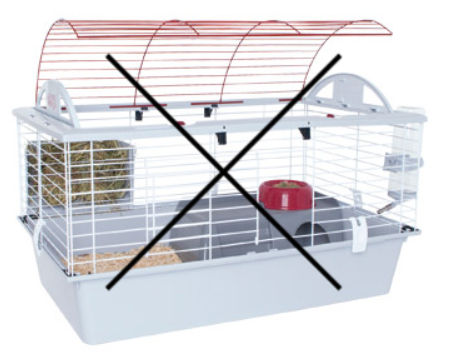
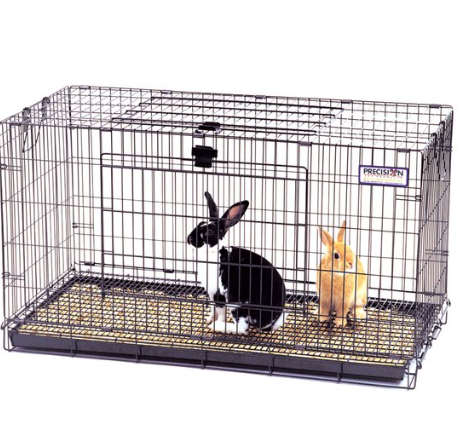
Signs and Symptoms
So what do you look for? What are some signs to recognize, hopefully early enough to treat successfully?
- The hunch – your bunny stays hunched, doesn’t move from their spot, and if so they do it rarely.
 This picture is of a bunny in severe pain. Notice the hunched position as well as the eyes. They are squinted, barely open – which is also a definitive sign of pain.
This picture is of a bunny in severe pain. Notice the hunched position as well as the eyes. They are squinted, barely open – which is also a definitive sign of pain.
 Notice the difference between the loaf and the hunch.
Notice the difference between the loaf and the hunch.
Sometimes it can be difficult to identify; however, the painful hunch is usually accompanied by some or all other signs and symptoms. - Tooth grinding – grinding will be audible, sometimes from a distance; but most definitely when close up. It is completely different from “purring” or “grinding”. Pain grinding will give you chills, imagine fingernails across a chalkboard. Yikes! yes, it’s spine-chilling just as I am typing this.
- Decreased food and water intake – you may notice that they didn’t touch or finish their pellets, or eat hay as normally. Maybe they usually drink their bowl of water overnight but you see their bowl is still full. Most importantly they refuse their favorite treat during the treat test. We will discuss the treat test further down.
- Poops – several signs! Diarrhea, misshapen balls, decreased amount, or zero poop balls. Poop balls can start to look like teardrops. Often this indicates excess fur. This could be good but also point in the direction of impending stasis. Good because they are passing the fur, but bad because it is a lot of excess fur.
She is pooping less or not at all. If you notice a decreased amount of poop balls over a 12-24 hour period, initiate stasis protocol. If there are zero poops in 12 hours – this is considered an Emergency. Get your bunny to your vet or emergency vet ASAP. Depending on your vet’s scheduling etc. You could be there when they open.
You can call and ask for advice. Sometimes they tell you to come in immediately or refer you to an emergency vet.
If it is in the middle of the night, or the weekend when your vet is closed, take to an emergency vet immediately. Do not wait any more hours as this requires immediate intervention. Picture of Normal Poops. The Cecal Pellets are Cecotropes.
Picture of Normal Poops. The Cecal Pellets are Cecotropes. - Diarrhea – Although you wouldn’t think that diarrhea would indicate a lack of peristalsis or a possible blockage; however, a blockage could still be present. Imagine a block of fur in a round tube (like bowels), not only is it completely blocking the GI tract, but sometimes it’s a partial blockage, which means that the body is still trying to expel any fecal matter. The body will increase peristalsis; which means unprocessed foods will push past the blockage.
Picture of Diarrhea below!

Diarrhea could be a sign that your bun has eaten something that didn’t agree with their belly. Monitor your bun and use your instincts to decide if she needs immediate intervention.
If she continues diarrhea for more than twelve hours she needs to see a vet ASAP.
Wet, runny diarrhea is also an EMERGENCY, and you must take them to a vet immediately. Understand that it is not unusual for you to have to travel several hours to find an exotic emergency vet.
This requires Sub-Q fluids ASAP, bunnies will become dehydrated very quickly.
Diarrhea will cause electrolyte imbalance, and dehydration and ultimately lead to death. Learn the difference between cecotropes, wet, squished poop, and diarrhea.
Picture of Normal Cecotropes
- Hypothermia – Check your bunny’s temperature rectally. Below I have listed a 2-second flex tip thermometer. The faster you can get a reading the better; I have noticed that when they are sick they don’t fight me taking their temperature.
Normal body temperature for bunny – 101°-103° F = 38.6° – 40.1° C. Always check rectally
If the temperature is below 101°F or 38.6°C, your bunny is suffering from hypothermia, you must immediately warm your bun. Wrap and hold them in a warm fleece blanket, a low-setting heating pad on your lap with him wrapped in something warm. The lower the bunny’s temperature drops, the slower the GI tract will work proficiently.
At The Vet
- Assessment – Your veterinarian will first assess your bunny from nose to tail. Check respirations, hydration status, abdominal tenderness, etc.
- Medication – They will make sure your bunny is properly medicated with pain medications (gas drops, meloxicam, gabapentin).
- Sub-Q fluids if needed.
- Gut stimulants – (metoclopramide, cisapride); which can be given orally or under the skin.
- Radiology – If they feel it necessary there may be x-rays taken of her belly to look for a blockage, and you can even see gas build up on an x-ray.
- Food Intake – If they rule out a blockage, syringe feeding will be initiated as well.
*** Medications listed inside parenthesis are examples of different brands they may choose to administer; depending on their preference or your bunny’s specific needs.
Your vet will let you know how she progresses, and if he feels comfortable sending her home, or if she should stay overnight for monitoring.
Check out our article on commonly used meds during stasis.
What you can do at home
There are things you can do at home, whether to treat early symptoms or while waiting to get to the vet.
Call your Vet – The moment you notice a change in your bunny’s intake, activity level or potty habits; this can include but isn’t limited to not going at all, going less, going outside their normal area, misshapen poops or diarrhea, etc., call your vet first thing!
But what if it’s the weekend, office is closed or you can’t get in right away?
The below advice does not replace or override proper assessment and care per licensed, exotic, rabbit savvy veterinarian.
These are just a few things you can do while waiting to see your vet.
Stasis Protocol
Recovery Food/Appetite Restore – Start by offering bowls with critical care and pureed pumpkin. Smooth out the tops so you can see if they are nibbling on it.
Also, administer simethicone (baby gas drops). Drops must be dye-free.
Ask your vet for the proper dosage. Buns should get gas drops every 30 minutes x four doses. Then a dose every hour x4 hours. Hopefully, by then you have made it to a vet.
Probiotics are a great addition during GI stasis. It helps stabilize gut Flora. There are several Probiotic supplements and come in many different forms. I will link our favorites below.
Some treats can be given regularly to help prevent stasis and others for non-eating bunnies.
If your bun is completely free-roam, block them off into an area, so you can monitor behavior and poops. I suggest a large X-pen in the middle of their favorite area. This way they can’t run off and stay hidden in a place you can’t get to.
Clear the entire area of any excrement.
Redo their litter box completely. This way you can monitor the shape, size, consistency, and amount of poops over the next few hours.
Most buns usually poop approximately 200-300 balls pet 24 hour period. You could consider a dozen poops in an hour a good amount.
Movement – Yes your bun doesn’t feel good and you don’t want to bother him; make sure he’s moving around. Even if you have to nudge or irritate him. Often, I walk behind him and nudge with my foot. Sometimes I tickle their butt or tail, because they hate that, right? Just get them moving.
Food – Alongside the bowls of critical care/pureed pumpkin make sure to offer one or two pieces of water-soaked greens. Preferably stick with Romaine or Leaf Lettuce; Parsley is also an excellent choice for upset stomachs.
You often hear how to take everything except hay and water, but I tend to disagree with that ideology. The main goal is to get a bunny to eat; however, sweets like fruits or treats should not be given to avoid further abdominal issues. They may become extra picky when not feeling well, remember you are doing what’s best for them.
I like to make sure I only give enough to be able to keep count. For example, I will place 10 pellets, one leaf of lettuce, and maybe 2 sprigs of parsley, in their enclosure. This allows me to know exactly if and how much they are eating.
Comfort – Make her as comfortable as possible. Lay a heating pad on your lap, stretch her belly out, gently massage her belly, and lightly bounce her. Imagine a human infant or even yourself with abdominal/gas pain. Make sure the heating pad is on the lowest setting. Massage from front to back. Do not exceed 20 minutes on the heating pad, let them take a break and see if they move around a bit more.
Medications –
Meloxicam (or any version) – in addition to the gas drops.
If your bunny has taken it before, you can administer one dose; as prescribed by your vet.
Sub-Q fluids – Subcutaneous fluids. Fluid injection into the sub-q space, just beneath the skin. Depending on the bunnies’ weight depends on how much you can administer.
Only attempt this if you have been taught how to do it and how much to administer to your bunny!
You do not want to give too much at once, as it can cause respiratory and cardiac issues, including death.
If willing, your vet can teach you to do this at home in case you need to know for another time.
- Critical Care/Recovery Food – Should your bun still not be eating; out of the bowls or the greens, it’s time to syringe feed. A lot of persons will say not to force feed as you could rupture their stomachs if there is a blockage.
- There is a distinct difference in force-feeding and assisted syringe feeding.
- Force feeding is cramming the food down their throat; whereas assisted is less forceful.
- How to syringe feed your bunny –
- To assist with syringe feedings, take the tip of the syringe and place it behind the front teeth pointing at an angle to the back of the mouth.
- You may need to wrap your baby in a towel (bun-rito)
- Do not point straight to the back of the throat!
- Gently push the plunger to administer just a pea size or so. See if the bunny chews and/or swallows. If so, continue giving the feeding. Once the recovery food starts just oozing out, like a baby that doesn’t like what you just gave him; then he is done.
- The amount required for the bunny to sustain varies depending on the size of your bunny.
- An approximately 4-5 lb bunny will need at least 90 ml per day to sustain. Give your bunny whatever he will take, just make sure he’s not overeating.
- Even if you can only get 10 ml in at a time, try again in 30 minutes or so. As long as he is eating you are headed in the right direction.
Should you have questions or need clarification about any medication listed, check out our latest article on the most commonly used stasis medications.
Yes, this was a lot to digest, no pun intended; take it one paragraph at a time. We are all learning so don’t be afraid to ask questions.
There is an amazing group on Facebook called Exotic Vet Corners Educational Group. They only allow licensed veterinarians and extremely experienced persons to answer questions. This eliminates a lot of the guessing and some people’s opinions vs medically correct.
Toodles!
Great Everyday supplements to help prevent GI stasis
Oxbow Natural Science Digestive Support Tablets
Oxbow Natural Science Papaya Support Tablets
Healthy Gut Probiotics Dietary Supplement – Powder
Probios Crunchy Digestive Support Treats – Yes! It is advertised for horses, but bunnies can also eat these and many other things that horses do.
Probios Soft Chew Digestive Support Treats
Other Supplements for active GI stasis
Oxbow Critical Care Fine Grind Herbivore – Currently the only version available due to manufacturing delays. Oxbow has stated that they should be dispersing products around autumn.
Sherwood Emergency Recovery Food – this bag only contains the powder recovery food.
Sherwood Emergency Kit – Includes Recovery food AND Appetite Stimulant. – Single-serving packets
Highly recommended Pellets
Oxbow Young Rabbit Food – Recommended from 8 weeks to 6-8 months
Oxbow Adult Rabbit Food – From 8 months through adult life
Oxbow Senior Food Pellets – Switch to these around 6 years old
Oxbow Garden Select Adult Food
Oxbow Garden Select Young Rabbit Food
Some additional stasis products
Dye-free Simethicone Baby Gas Drops
Benebac Probiotic Gel – give a dime to nickel size dose. No worries if you give, “too much”, it won’t hurt your bunny. A lot of buns find this tasty
Probios Oral Gel – It says Equine, but that’s ok. It is also for any other herbivores.
Miscellaneous Items Needed During Stasis – or other illnesses.
2-Second Quick Read Thermometer – Flex tip for added comfort and reduced injury
60 ml Feeding Syringe – Pack of 10 – Always recommend having more than one, since buns like to chew the tip off.
1.0 ml Medicine Syringe 3 ml Medicine Syringe Make sure they are labeled as Luer Slip or Catheter Tip syringes. Using Luer Lock syringes will cause wasted medication in the threading.
Animal Heating Pad – Several patterns and shapes are available
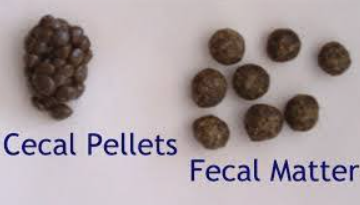
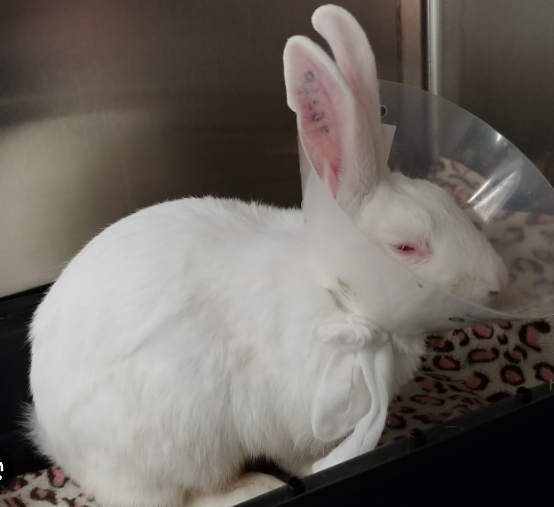 This picture is of a bunny in severe pain. Notice the hunched position as well as the eyes. They are squinted, barely open – which is also a definitive sign of pain.
This picture is of a bunny in severe pain. Notice the hunched position as well as the eyes. They are squinted, barely open – which is also a definitive sign of pain.
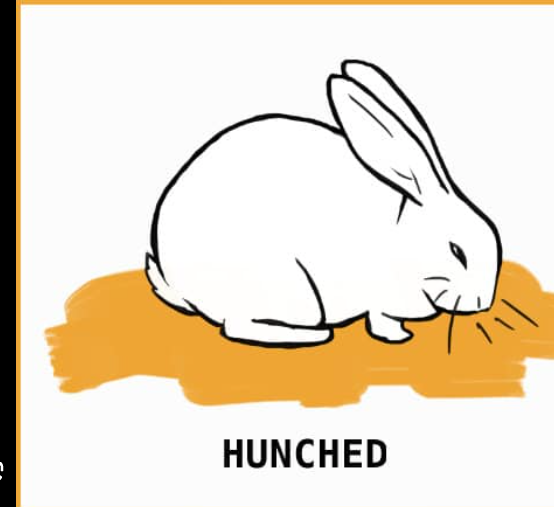 Notice the difference between the loaf and the hunch.
Notice the difference between the loaf and the hunch. 
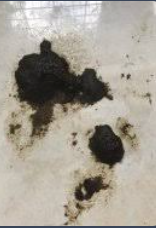


Recent Comments